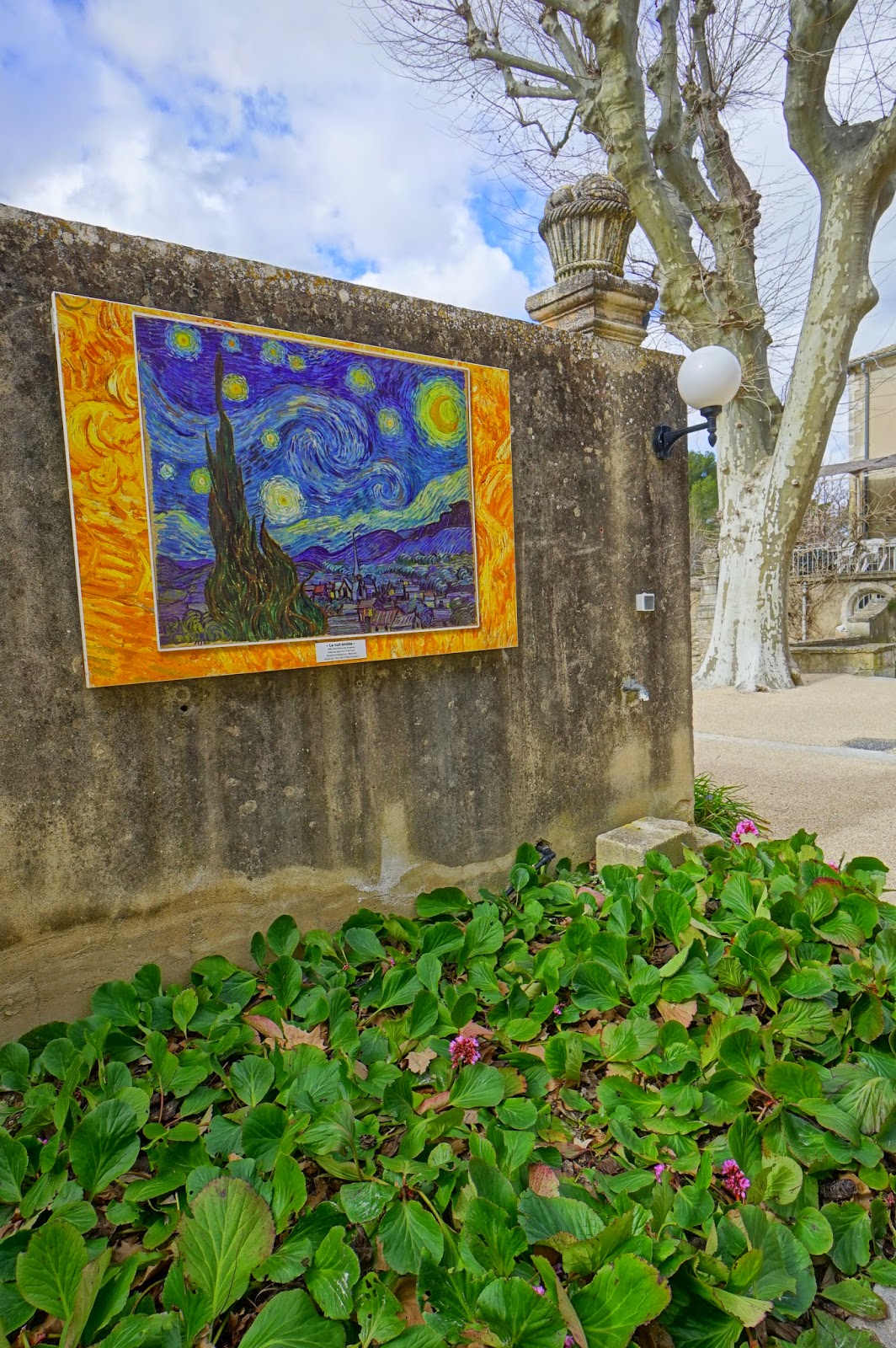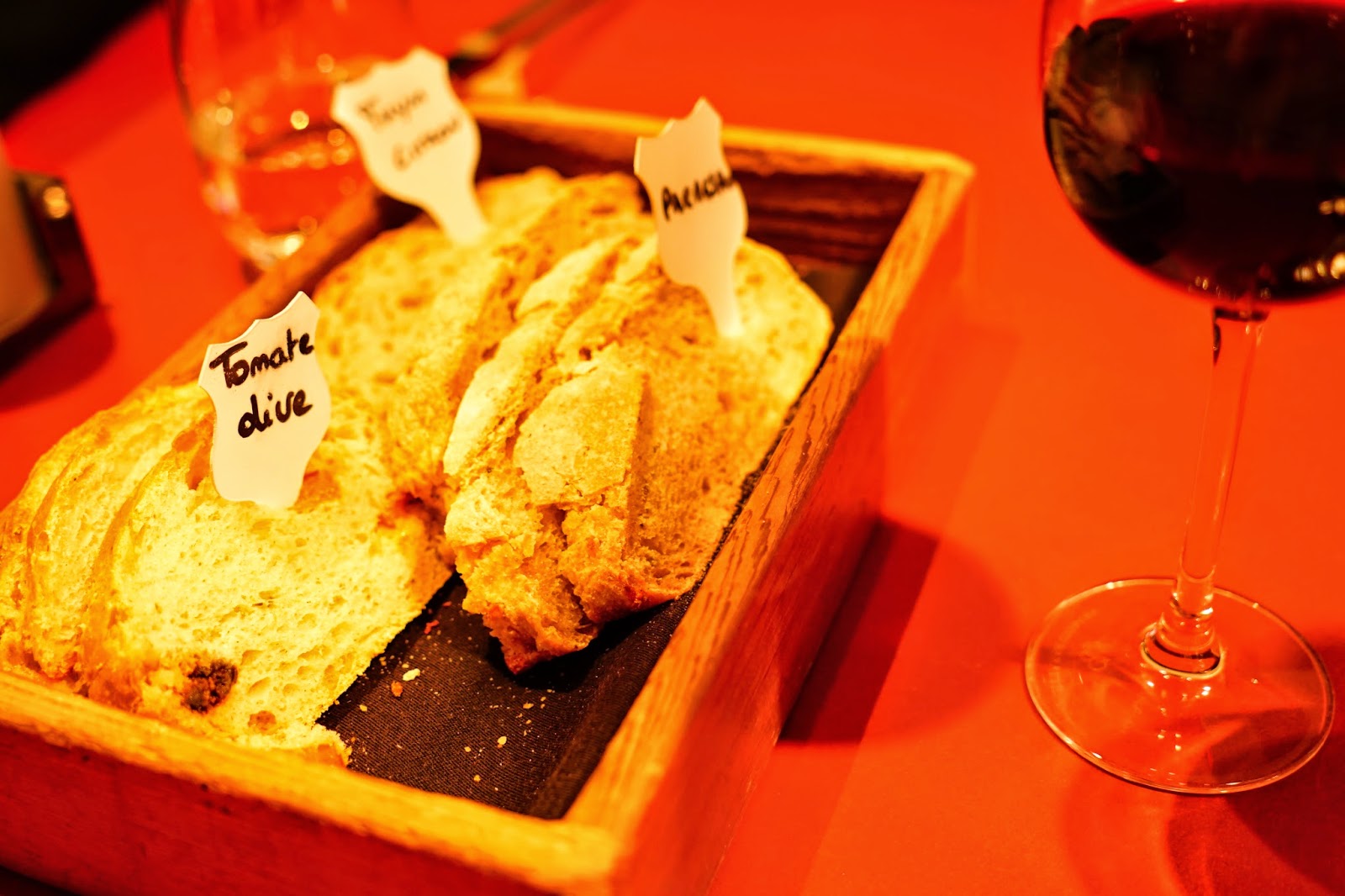The TGV train from Paris whisks us away to Avignon in less than 3 hours covering 430 miles, which would impress even the most ardent opponent of the California rail project. Avignon is a walled-city with an understated, even austere, feel to it. Its claim to historical fame is to serve as the Pope's residence in the 14th century, which ultimately led to the Papal Schism in the Catholic Church. Indeed, the Palais de Papes is the number one sight here. After visiting the other major sight, Pont d'Avignon (or formally known as Pont de Benezet), which is a famous broken bridge, we stroll in the back streets of Avignon. It is chilly but not a bad day to start our exploration of Provence.
 |
| Bridge to nowhere? No, not Alaska. It's Pont d"Avignon, a landmark of Avignon made famous in a French song |
 |
| Avignon: Palace of the Popes seen from Avignon Bridge |
 |
| Avignon: Rue des Teintouriers, where medieval gargoyles serve as benches |
 |
| Avignon: Palace Square is rather empty in the off-season. |
 |
| Avignon: Palace of the Popes. One of the most guarded room has the false floor below which lies a chamber to store treasures, now apparently replaced by coins thrown by visitors. |
 |
| Avignon: Large "Pope's Chapel" in Palace of the Popes. Avignon was a major center for Ars Nova. The rich history of the Palace makes up for a complete lack of interior furnishings here |
.JPG) |
| Avignon: As we exit the Palace, we follow our noses and eyes, and voila, we are in the charming and historic Hotel la Mirande for Afternoon Tea. |
 |
| Avignon: Palace of the Popes at night |
Having seen enough Roman ruins in our lives, we skip the highly rated trio of sites near Avignon - the aqueduct at Pont du Gard, the theater at Orange, and the arena at Nimes. Instead, we head in a rental car to St. Remy de Provence, which will be our base for three days. Drivers seem pretty mellow in this area thankfully, and I just have to navigate the roundabouts, especially those with poor signs.
Well, what do you know - it's hard to avoid the Roman stuff after all. The first place we visit in St Remy is Glanum, a pretty typical Roman site. But we are here only because it is right next to the object of our real interest - St Paul Monastery, which used to be a psychiatric hospital and happened to host one Vincent Van Gogh. Although his self-banishment here from nearby Arles was only for a year, it marks an incredibly productive period. A sign of mania perhaps, but that is all art lovers' gain. The advice from the lady running our B&B was spot on - by walking about an hour round trip instead of driving, we took advantage of a sort of Van Gogh trail on which replicas of his work are strategically located.
.JPG) |
| Glanum: A Roman site at St. Remy de Provence |
 |
| St. Remy: First of the Van Gogh sites. He painted this presumably at one of these olive groves nearby. |
 |
| St. Remy: Walking up to the main building of St. Paul Hospital and Monestery where Van Gogh was a patient for a year. |
 |
| St. Remy: and my favorite! Van Gogh painted "Starry Night" during his stay at this hospital. |
.JPG) |
| St. Remy: A replica of Van Gogh's room at the hospital, so faithful that the colors of the wall paint and the curtains are like he described in his letter to his sister. |
 |
| St. Remy: The main hospital building with yet-to-bloom iris (left) and lavender (right) in the backyard, looked over by Van Gogh reproductions. |
 |
| St. Remy: time for lunch in this compact city |
 |
| St. Remy: after lunch, we just walk a few blocks to check out the birthplace of a famous son, Nostradamus |
A short drive from St. Remy lies Les Baux, one of the most popular destinations in Provence and for a reason. It is a fascinating combination of rocks and ruins, and now a village of charming shops and restaurants. Thank God it is off-season and we don't have to rub elbows while walking up the narrow alleys.
.JPG) |
| Approaching Les Baux: which are castle ruins and which are the rocks? Any Bauxite sighting? |
 |
| Les Baux: the castle ruins located at the top of the town is an fascinating place to walk around, except we faced howling winds. |
 |
| Les Baux: the town below the castle ruins is chic and touristy. |
 |
| Les Baux town |
 |
| Les Baux: Crepes - the perfect remedy for the body beaten down by the cold wind |
.JPG) |
| Leaving Les Baux at sunset |
 |
| St. Remy: we are staying at this mas, a Provencal farmhouse. |
 |
| St. Remy: market day at the City Hall plaza |
 |
| Driving from St. Remy to Arles |
Arles is bigger and also less gentrified than St. Remy. It has a real city feel with some of the dilapidation contributing to its charms. It's a minor market day here, too, sprawled about Place Lamartine. Near there, we locate the first of the Van Gogh "easels," comparing his paintings to those that served as models or inspirations, placed throughout the city. Yes, Vincent is also a big draw here - he loved Arles and produced some of his best known paintings here. But we also cannot ignore the Roman Arena, which is after all smack in the middle of the city as apparent on the aerial shot on postcards.
 |
| L'Arlesienne! Just wanted to say it, as Van Gogh painted it and Bizet composed it. |
 |
| Arles: the "yellow house" is gone now, bombed during WWII, but the building behind it in the painting is still standing. |
 |
| Arles: a street leading to the Roman Arena |
 |
| Arles: Roman Arena, with its antiquity being partially masked by scaffolding |
.JPG) |
| Arles: seen from the tower at the Arena |
 |
| Arles: Labeled breads at L'Atelier de Rabanel |
 |
| Arles: St. Trophim Church, which has served as a stop for pilgrims on Camino de Santiago, I was delighted to learn. |


No comments:
Post a Comment